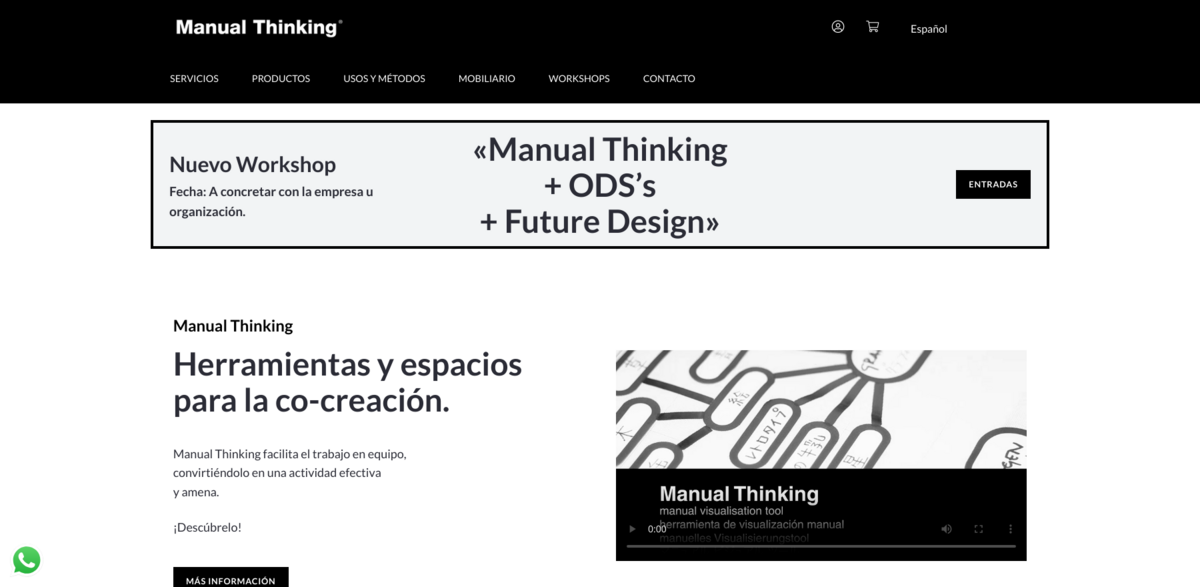What is Manual Thinking?
Manual Thinking is all about tools and spaces designed for co-creation. It’s a project that makes teamwork not just effective but also enjoyable. Imagine working together with your team in a way that flows naturally, sparks creativity, and keeps everyone engaged. That’s the essence of Manual Thinking. Born from the mind of Luki Huber, a Swiss product designer based in Barcelona, this project emerged from a desire to optimize the creative process by inviting client teams to actively participate. It’s a fresh approach that combines practical tools, dynamic methods, and specially designed furniture to create an environment where ideas can truly come to life.
Main Benefits of Manual Thinking
Manual Thinking offers a range of benefits that make collaboration smoother and more productive. Here are some key facts and figures that highlight its impact:
- Tailored workshops designed specifically for companies and organizations.
- A certification program available for professionals eager to master the methodology.
- Practical tools that help teams work dynamically and effectively.
- Templates that simplify the application of creative, strategic, and organizational methods — all visually driven.
- Furniture designed to optimize workspaces for active co-creation, minimizing unnecessary talking and maximizing visualization.
Products and Services Offered
The Manual Thinking catalog is pretty diverse. It includes practical tools that help teams work in a dynamic and effective way. These tools aren’t just about getting the job done; they’re about making the process enjoyable and visually engaging. Plus, there are templates that allow users to easily apply creative, strategic, and organizational methods. These templates make complex processes feel simple and accessible, encouraging teams to think outside the box and collaborate more freely.
The Role of Furniture in Co-Creation
One of the unique aspects of Manual Thinking is its range of furniture designed specifically for co-creation spaces. This isn’t your typical office setup. The furniture is crafted to support active work, encouraging movement and interaction. The idea is to create a space that minimizes talking and prioritizes visualization, so teams can focus on what really matters — the ideas. When a company decides to regularly use Manual Thinking, setting up a dedicated Manual Thinking classroom with this furniture is highly recommended. It’s all about creating the right environment to foster creativity and collaboration.
Founder’s Vision and Origins
Luki Huber, the founder of Manual Thinking, combined his passion for maps with a clear gap he saw in managing creative methodologies. Based in Barcelona but originally from Switzerland, Luki developed the Manual Thinking brand and its catalog of products and services to fill this need. The tools were born out of a search for optimizing the creative process, inviting client teams to participate actively. This approach reflects a deep understanding of how creativity works best — when it’s shared, visual, and structured.
Impact on Sustainable Development Goals (SDGs)
- Quality Education
- Decent Work and Economic Growth
- Industry, Innovation, and Infrastructure
- Reduced Inequalities
- Partnerships for the Goals
Workshop ODS: Exploring Sustainability through Creativity
Manual Thinking has developed a replicable workshop focused on the Sustainable Development Goals (SDGs) set by the UN within the 2030 agenda. This workshop is designed for companies and organizations and can last anywhere from half a day to two full working days, depending on how deep participants want to dive. Using mind maps and a sequence of creative methods, participants explore five selected SDGs, uncovering opportunities and innovative ideas. It’s a hands-on, engaging way to connect sustainability goals with real-world business challenges — and it’s pretty inspiring, too.





















